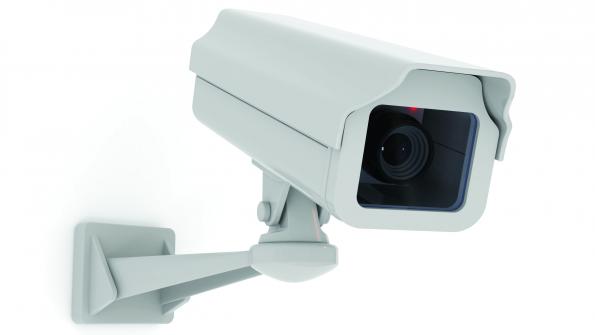Ohio judge finds ‘speed cameras’ unconstitutional
Drivers in Elmwood Place, Ohio, won't have worry about speed monitoring cameras anymore. And soon, traffic cameras may be unlawful statewide.
On June 27, Judge Robert Ruehlman ordered Elmwood Place’s cameras shut off, taken down and impounded, in the wake of a bitter battle over the legality of such devices, according to a report on local TV news station WLWT.
The Columbus Dispatch reports Ruehlman ruled the cameras violate motorists’ constitutional rights to due process and referred to the camera program as “a scam.”
Ruehlman ordered the cameras shut down, the ticketing program dismantled and outstanding tickets waived, WLWT reports.
Elmwood Place, a village of 2,200, started using the cameras, operated and maintained by third-party contractor Optotraffic, in 2012 according to the Associated Press. The cameras recorded speeders and sent them $105 citations in the mail. The Columbus Dispatch reports that in the first month, 6,600 citations were issued – triple the number of village residents.
According to court documents, Elmwood Place was receiving “almost $325,000 per month” from fines and on pace to gain nearly 3.4 million in annual revenue, the AP reports.
Ruehlman origianally ordered a shut down of the program in March. His initial order was violated. The cameras were turned back on, although Elmwood Place Police Chief Bill Peskin testified they were used to collect speed and traffic data, not to issue new tickets. Peskin also testified his officers did not collect funds from violators after the program was shut down.
“Many people did show up, trying to pay their citation to us,” Peskin said in court, according to WLWT, “and we told them that the program was to be suspended and they didn’t have to pay the citation.”
The tickets, however, were never meant to be paid directly to Elmwood Place. Optotraffic collected the funds and continued to do so after receiving the judge’s order in March. According to the report, the company collected some $48,000 after the fact, with a percentage of that going to Elmwood Place as per Optotraffic’s contract with the village.
To ensure his orders were not violated further, Ruehlman ordered Hamilton County Sheriff Jim Neil to remove the cameras and place them in impound at the village’s expense. The equipment is to be released when the improperly collected $48,000 is returned to those from whom it was collected.
Mike Allen, a member of the team of attorneys fighting the speed cameras, referred to them as a “money grab.” He said, “This offends me as a citizen, it offends me as a lawyer, it offends me on behalf of my clients,” according to WLWT.
Ruehlman also allowed the legal team to move forward with a class action suit against Optotraffic, which Allen says would apply to anyone who received a ticket from the time of the program’s inception, according to the report.
Ruehlman’s order came a day after lawmakers in the Ohio House approved a measure that would prohibit local governments from using cameras to determine if motorists have run red lights or have been speeding, statewide, according to an AP report.
The report states House members voted 61-32 on the bill. The measure will now move to the Ohio Senate for further consideration.
Rep. Ron Magg (R-Lebanon), the main sponsor of the bill, says the main goal of traffic cameras is not to foster public safety, but to generate revenue. However, opponents argue monitoring devices prevent accidents and save lives, according to the AP.





















This was a courageous ruling
This was a courageous ruling by a judge. Elmwood Place was rapidly trying to imitate New Rome, OH as the most predatory speed trap city in the state.
Speed cameras produce profits ONLY when the posted limits are set less-safely by posting them well below the normal, actual, current, safe speeds of travel. If, for example, 75% of the traffic under good conditions travels at 36 to 45 mph, then posting 35 or 30 or 25 as the limit is a predatory posting designed to facilitate speed traps. In this example, 15% will be above 45 mph and only 10% will be at or below 35 mph.
Posting speed limits this way for revenue is a true racket, not a safety program. See our website for the science behind the safest 85th percentile posted speed limits and why they work the best.
James C. Walker, Life Member-National Motorists Association
I received a “speeding”
I received a “speeding” ticket from one of those spy cameras in Phoenix, AZ. When my ticket came in the mail, I threw it in the trash (as per an attorney I know). They can’t make the speeding ticket stick, according to him, because just like a speed gun held by an officer, they should be calibrated after each use. If an officer cannot show that his ‘gun’ was calibrated prior to clocking your speed (there is a date & time stamped print out for calibration), then they cannot prove an accurate reading. At least, that is how it is in Arizona and my friend, the attorney, is not called the ‘traffic guru’ for nothing. Just as an FYI, ask for proof of calibration next time you are ‘clocked’ going to fast and have to go to court or try to get the speeding citation changed to a citation that is not a moving violation (so to speak) and is called ‘a waste of fossil fuel’ instead of speeding.
Traffic cameras properly used
Traffic cameras properly used can promote public safety in addition to realistic speed limits and properly timed traffic signals. A lot of accidents could be prevented as a result of a properly using traffic cameras. I wish they had been in use years ago- perhaps the driver who ran a red light and killed my son could have learned to drive more safely earlier and prevented this tragedy.